Proper home ventilation is key to avoiding moisture problems. Discover proven techniques to prevent excess humidity, mold, and dampness.
Moisture control and too-high humidity can be a real challenge for homeowners, especially in Northern and Southeastern climates.
It’s one of those problems that sneaks up on you easily, too.
One day, everything seems fine in your house. The next day, you notice a strange discoloration behind a cabinet door… and all of the sudden you’ve got a mold issue to deal with.
Ugh. How does this happen?
Moisture issues can cause comfort challenges, structural damage, and even health problems. (Mold isn’t great for your lungs, as you might imagine.)
Don’t worry, though—at Sealed, we’ve seen lots of moisture problems caused by home ventilation issues, and we’ve got home ventilation remedies down to a science (and can deliver them for no upfront cost, too, if your house qualifies… tap here to find out).
Consider this article your personal guide to finding (and fixing) moisture issues in your home.
Let’s get into it!
Table of contents:
- Signs of too much moisture in your house
- Is moisture in the house bad for you?
- How to get rid of moisture in a house
- How to keep excess moisture out of your home
- The HVAC system that’s amazing at humidity control
- Who to call for moisture in a house
- Upgrades to keep moist air out–for NO upfront costs
Signs of too much moisture in your house—how to know your house has moisture problems
First, let’s make sure that moisture is the real issue.
Just how, exactly, do you tell if there is too much moisture in your home? Here are some common signs:
- You notice a lot of condensation.
- Mold and mildew start showing up.
- Your house feels sticky, too humid, or stuffy.
Let’s look at each of these symptoms more closely below.
1. You notice a lot of condensation
If your home has a moisture problem, one common sign is condensation—especially indoors on windows and walls.
Condensation happens when warm, moist air meets a cooler surface, causing the moisture in the air to condense into water droplets.
If it’s happening in your house, you’ll likely notice foggy or cloudy windows and water droplets on the walls.
You might think this is a problem with your windows, but (usually) it’s not.
Condensation is such a reliable indicator of moisture issues that you can even conduct your own DIY experiment to test your humidity. Find out how to do the ice cube test in our guide: How to check your home humidity levels.
2. Mold and mildew start showing up
If you’ve got too much moisture in your house… get ready for some uninvited “friends” climbing up your walls.
Mold and mildew (aka fungi) love to grow in moist, dark environments, so keep an eye on places like bathrooms, kitchens, basements, and those little cavities inside walls or attics.
And once you find some? It’s time to take action. Mold is destructive—both to your house and to your health.
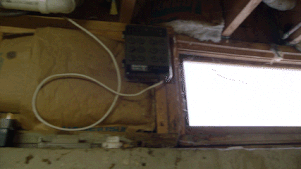
3. Your house feels sticky, too humid, or generally stuffy
Houses with too much moisture just tend to feel a little bit… gross.
This is especially true in the summer, when moisture issues can manifest in sticky, close-feeling, or stuffy air—basically a sauna without the relaxation benefits.
(Related read: Why is my house so humid? or How to get rid of stuffy air in your house)
In short, the air in your house should feel great—not too moist, not too dry. If that’s not true in your home, it’s time to fix the problem.
But not just because you’re uncomfortable (although that is a pretty good reason).
An unresolved moisture issue can lead to a lot of other serious problems—and it’s usually a symptom of energy waste in your house, too. Let’s explore more below.
Is moisture in the house bad for you?
It’s tempting to let a moisture issue ride—especially if you and your family have been dealing with it for a while. But if it hasn’t caused a serious issue, why bother fixing it?
Well, let’s address the fun guy in the room: mold.
Besides being smelly and unappealing, mold is awful for humans.
Mold and mildew can cause a variety of health problems, from respiratory issues to skin irritation—and they can worsen existing conditions such as asthma or allergies.
Plus, even if mold doesn’t lead or contribute to a chronic condition, inhaling mold spores can cause coughing, sneezing, throat irritation, and other sporadic respiratory problems—even in otherwise healthy people.
It’s nasty.
But the problems don’t stop with health issues. Mold, mildew, and excess moisture also cause structural damage to your home: rotten wood, peeling paint, warped drywall. You know—all that fun stuff.
Excess moisture also cause structural damage to your home: rotten wood, peeling paint, warped drywall.
Even if we put all that aside, there are plenty more reasons to address a moisture issue.
Take pest infestations, for example.
Once bugs enter a house, they look for the same thing you’d look for if you were stranded without supplies in a foreign land: water.
And if they find a good source of water, they do the same thing you’d do under the circumstances—set up camp and put their little bug feet up. If you want to close up their campsite, get rid of their watering hole by fixing the moisture issue (1).

Finally, as we discussed above, houses with moisture issues tend to be uncomfortable, especially in the hot, summer months.
Sometimes very uncomfortable—which can make it difficult for you and any other residents of your house to sleep, concentrate, or have enough energy to get things done (2).
(Related read: 11 Unexpected Ways to create a Comfortable Home)
Bottom line: If you think your house has a moisture issue, don’t put off dealing with it.
Moisture problems really do affect your life—and the problems compound the longer you leave the problem unchecked.
Moisture problems compound the longer you leave them unchecked.
Okay, so now that you’re convinced—you’re convinced, right?—here’s the question of the hour: How do you fix moisture issues?
First, let’s talk about what to do if you’ve already got significant moisture damage.
How to get rid of moisture in a house
The best way to address moisture problems in your home is to keep moisture from becoming a problem in the first place. (And we’ll get there in a minute.)
But if you suspect major moisture damage in your house, you’ll need to take certain measures immediately.
Here’s a brief overview of what a professional moisture remediation can include:
- Stopping the source of the moisture
- Drying out the area completely
- Removing mold
- Treating wood rot and drywall
Okay, let’s take a closer look.
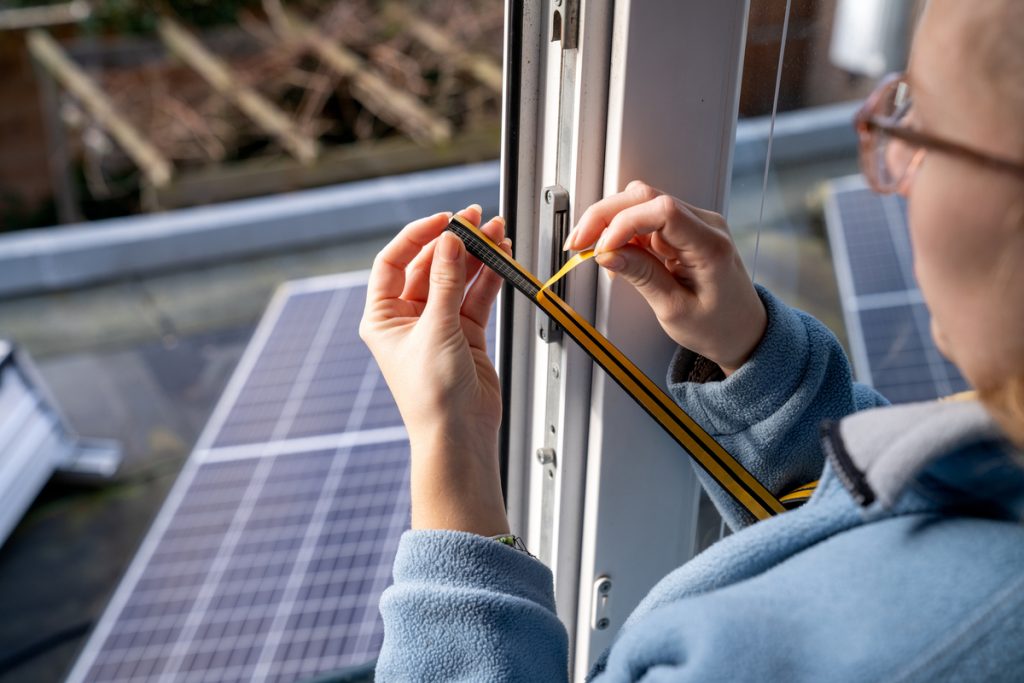
Stop the source of the moisture (if possible)
Many times, moisture issues happen because too much damp air is getting into the house. Whole-home weatherization can solve this problem, and we’ll jump into that below.
But sometimes moisture damage is traceable to a very specific, acute cause, such as leaky plumbing or a sump pump failure.
If that’s the case, it’s important to fix it before you do anything else.
Dry out the area completely
Next—and fairly obviously—any areas affected by moisture need to be completely dried out.
Use a fan, dehumidifier, or open windows to circulate air and remove extra moisture. (But by all means, if it’s raining, keep those windows closed. You don’t want to add insult to injury.)
Removal of mold
Getting rid of any mold and mildew should be a big priority.
Our advice: Safety first, always (3).
Put on an N95 mask before you get to work. If you have other safety or health concerns, we double-down on our advice to consult a professional mold remediation company.
But, if you prefer the DIY route, you can remove mold in a number of ways—bleach, hydrogen peroxide, special pro vacuums, and good old-fashioned elbow grease come to mind.
But, however it’s done, it’s not a pleasant job, and don’t forget those safety precautions.
Treatment of wood rot and drywall
Excess moisture can rot or damage wood and drywall, so you will need to replace them with new, treated materials.
If all of it sounds intense for a DIY project, you’re not wrong—you’ll notice we specified “professional remediation” above.
Really—you won’t want to take on these projects alone, especially since a poorly-done remediation can result in health and structural problems for years to come.
This is one project you want done right.
(Tap here to jump to our recommendations regarding just who to call for moisture in a house.)
Now that we’ve covered that cheerful topic, let’s go in-depth on what’s probably the most important thing you can take away from this article:
How to keep moisture out of your house in the first place.
How to keep moisture out of your house—short-term moisture control fixes
If you don’t have a plumbing issue and your house isn’t in an active hurricane zone, chances are your moisture issues are due to one very simple cause: Too much moist air is getting into the house from the outside environment.
So let’s start by covering some immediate, short-term solutions that can help you reduce the moisture coming into your house (or, at least, help you get some of that moisture out):
Weatherize your house
Temporary weatherization fixes like weatherstripping and caulking won’t solve all your moisture problems (they certainly don’t replace professional whole-house air sealing)—but they can help keep humid air from entering your house, and they’re better than nothing if you’ve got a big problem.
What steps should you take?
Well, the details of weatherization are pretty complex to get into here, so if you’re interested, we recommend hopping over to our guide covering whole-home weatherization.

Improve ventilation with box fans and windows
How do you dehumidify a room naturally? It’s a little old school, but getting the air moving can definitely help mitigate a moisture problem—temporarily.
Box fans are a great way to improve air circulation and help move air in and out of the rooms. If you open your windows when you’re running the fan, too, that’s even better.
(Learn more about circulating air in our guide to getting rid of stuffy air!)
Turn on the dehumidifiers
Dehumidifiers can be a kind of a pain to use, honestly, but they’re also a decent short-term fix for moisture problems if used correctly.
How do you use them correctly? Start by getting the right size for your space.
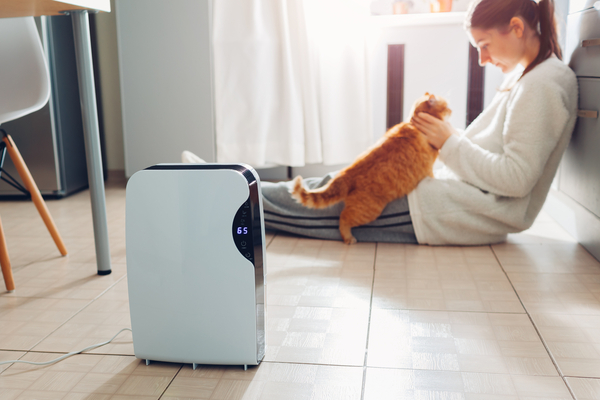
Humidifiers come in three sizes, roughly:
- Large: 45- to 50-pint
- Medium: 30-pint
- Small: 20- to 22-pint
A rule of thumb is that you want 10 pints of capacity for the first 500 square feet—then 4 additional pints of capacity for every 500 square feet after that.
That means if you live in a 1,500-square-foot house where air circulates freely, you might be able to get away with one small, 20-pint dehumidifier.
But if you live in a 3,500-square-foot antique charmer, you’ll likely want a large dehumidifier—or, if you have lots of different climate zones in the house, a bunch of carefully-sized smaller dehumidifiers (4).
Dehumidifiers require maintenance, so make sure you empty the tank and clean or change the filters regularly.
If all of that sounds like a lot of work, you’re right. It is.
And, these fixes are just bandages—temporary, short-term solutions for controlling in-home moisture levels. We predict that after about two weeks of beeping dehumidifiers, you’re going to get very tired of temporary solutions.
That’s why we love HVAC solutions that include whole-house dehumidification to help stop moisture issues for good.
Long-term moisture control solutions
The key to a permanent moisture control solution is two-fold:
- Keep excess moisture out of your house in the first place, and
- Make sure your HVAC system is up to the challenge of removing any excess moisture that does get in.
Let’s talk through both of these briefly.
What causes too much moisture in a house?
To understand the recommendations here, we need to discuss the basics of how moist air moves in and out of a home—including a phenomenon known as the Stack Effect.
The Stack Effect is a fancy term for the way that warm, dry air rises and escapes through the upper levels of a home, while cooler, wetter air is sucked from below. Watch the video below for a quick explainer.
Most American homes don’t have a functioning barrier between the air on the inside of the house and the air on the outside.
And outside air is a genius at getting in—which is why the Stack Effect works so darn well.
Taking in too much outside air is also a clear sign that your house is wasting energy. So how do you fix it?
Here’s how to keep moisture out of your house
So your mission—should you choose to accept it—is to bring the Stack Effect cycle to a halt by doing two things:
- First, call in a professional to close up the tiny holes and gaps in your home that are allowing lots of air exchange with the outside.
This process is called air sealing, and it’s one of the best energy-efficient home improvements you can make.
When it’s done correctly, it you’ll be amazed at how much moist air stays out of your home - Make sure your attic and foundation are properly insulated.
If the top of your house isn’t insulated properly (and many homes in the US aren’t), you can bet that the Stack Effect is in full swing in your house—sucking a ton of moist air inside.
Together, air sealing and insulation upgrades are a one-two punch that will keep moisture outside—where it belongs.
(Get both of these done for ZERO upfront cost with Sealed.)
Get an HVAC system that’s up to the challenge of whole-home dehumidification
Once your home is sealed and insulated properly, the next step is to take a look at your HVAC system.
A lot of older, traditional AC systems don’t remove moisture efficiently. It’s not their fault! Times have changed.
If your unit isn’t up to snuff, our recommendation? A super-efficient heat pump.
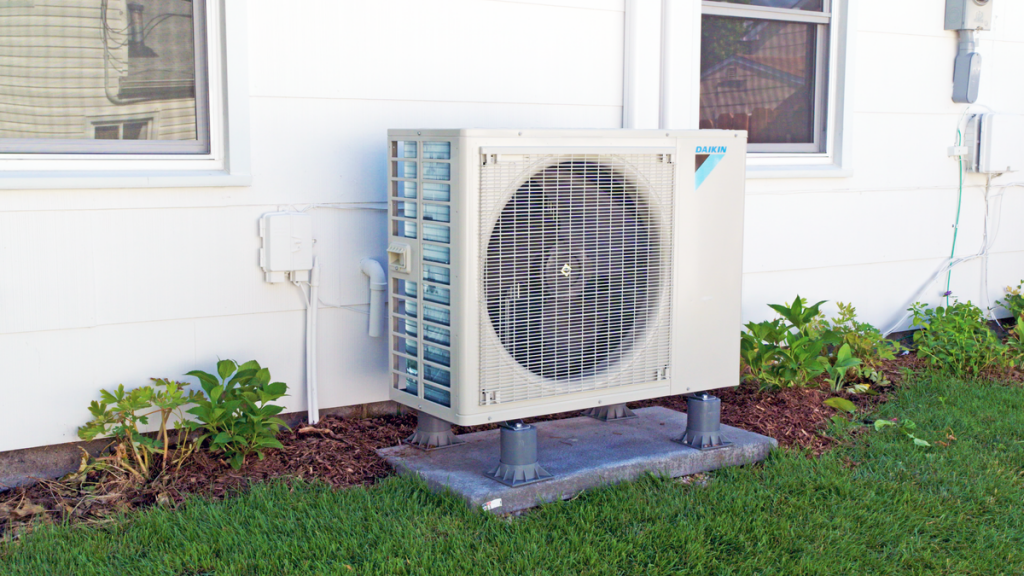
Don’t be fooled by the name.
Heat pumps get their name from how they work, which is by moving heat energy around. Here’s how:
- In the winter, heat pumps take heat from the outside and transfer it into your house.
- But in the summer, they work in reverse—taking heat from inside the house and pushing it outside.
That means that a high-efficiency heat pump can heat and cool a home—all in one system.
More to the point? They also dehumidify. Beautifully.
In fact, heat pumps are a complete dehumidification solution, with the capacity to remove very large amounts of moisture from the air in your home—automatically.
Heat pumps are a complete dehumidification solution, with the capacity to remove very large amounts of moisture from the air in your home—automatically.
Plus, a high-efficiency heat pump can cut your energy usage significantly. Heat pumps are up to 3x more efficient than conventional HVAC technology of the past, like AC systems, furnaces, and boilers.
That’s a big deal, considering how high energy costs are rising these days.
Ultimately, going from traditional HVAC to a heat pump is like switching from a Pinto to a Porsche. It’s a life upgrade.
Learn all about heat pumps here—including how you can get one installed by pros for no upfront cost.
Now that you know how to fix excess moisture in your house, let’s consider the logistics. Who should you call first?
Who to call for moisture in a house?
There are two categories of professional help you’ll want to call on in the event of moisture issues.
If you already have serious moisture-related damage to your house…
The first company you should call is a mold and moisture remediation company.
Those folks are pros at knowing what to do first so that your home gets fixed efficiently—and without risk of lingering health or structural issues.
You can find a reputable company in your area on sites like Angi.com, or—our favorite method—by asking people you know for personal recommendations.
If your house isn’t seriously damaged by moisture, but you need to address the issue (because you do!)…
This can be a bit more complicated, since this situation calls for a combination of upgrades that aren’t always available from a single contractor!
First, in order to keep moisture out of your house, you’ll need a combination of air sealing and insulation upgrades.
Home weatherization companies specialize in this type of work, and they can identify air leaks and gaps where moisture may be entering the home. You can start looking for these companies by Googling “air sealing + <name of your city>.”
Then you’ll need to find an HVAC company that really knows their heat pumps.
Once again, a combination of Google and your personal network will yield the best results. Verify the HVAC company is well trained in proper heat pump installation. (By the way, Sealed does this—for no upfront cost, too, if your house is eligible.)
Finding reputable contractors requires due diligence. Ask for testimonials from previous customers, and when you decide on one, make sure you get a detailed explanation and timeline of the work—in writing—before you sign any papers.
If you don’t feel like making these calls or managing any of this work yourself…
Give Sealed a call. Yes, this is a blatant presentation of our offer, but we’re nerds about this stuff and really good at what we do.
Although we’re not a mold remediation company, if you need remediation for moisture damage, we’ll help point you in the direction of a reliable contractor.
And if you’re ready to solve your home’s humidity problems—completely and permanently—we’ll run the whole project for you.
We know the reputable contractors in your area, and we know how to organize and oversee a home upgrade project that will fix your comfort issues—with zero stress to you.
Really. We’ll handle everything. We love making customers like Devandra super-happy:
Sealed’s advisor was awesome! She designed the project based on my needs, sent all the paperwork to the contractor, and answered any questions I had. Our communication was excellent. Overall, I am pleased with the results and service from the entire Sealed team.
Even better? If your house qualifies, we can fix your moisture issues with no upfront cost to you.
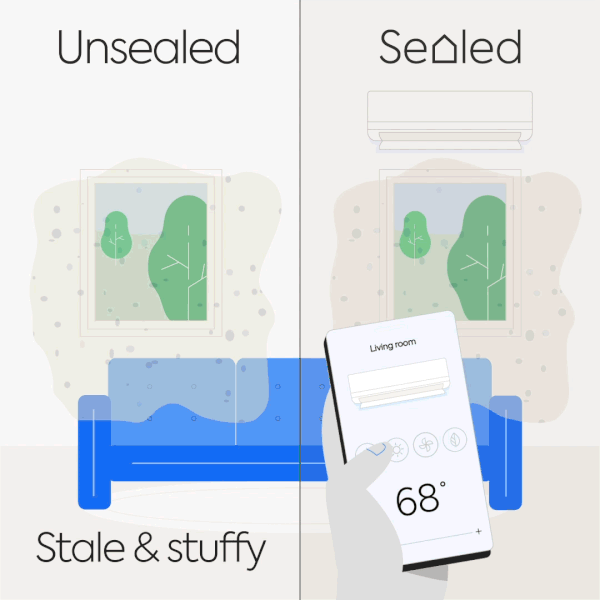
Get the upgrades you need to keep outside moisture outside–for NO upfront costs
The thought of home upgrades can be intimidating. Get some peace of mind (and more free time!) and let Sealed handle the process for you.
If your house qualifies, you can get the right upgrades to fix your humidity without the stress (or the hit to the wallet).
With Sealed, you can get energy upgrades like:
- A heat pump water heater,
- Attic insulation,
- Professional air sealing
- A super-efficient heat pump HVAC system, or
- All of the above (if your house needs it)
…and at zero upfront cost. Eligible federal and local rebates included.
(Yep, you read that right.)
We’ll make the calls, do the paperwork, and hire the experts.
And… Sealed shoulders the risk so you don’t have to. We’re so confident in our energy performance methodology that we offer a money-back guarantee.
Sounds too good to be true? It’s not. Learn more about payment options.
Answer a few questions here to see if your house qualifies.